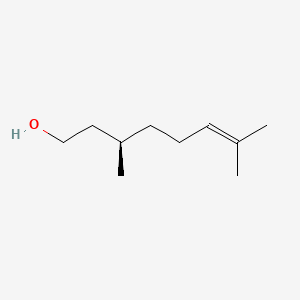| Authors | Title | Published | Journal | PubMed Link |
|---|---|---|---|---|
| pmid:11377274 | ||||
| Bozza PT and Weller PF | Arachidonyl trifluoromethyl ketone induces lipid body formation in leukocytes. | Prostaglandins Leukot. Essent. Fatty Acids | pmid:11418016 | |
| Manchanda R et al. | Role of prostaglandins in the suppression of apoptosis in hen granulosa cells by transforming growth factor alpha. | 2001 | Reproduction | pmid:11425333 |
| pmid:11439452 | ||||
| pmid:11517434 | ||||
| pmid:11521400 | ||||
| Carnevale KA and Cathcart MK | Calcium-independent phospholipase A(2) is required for human monocyte chemotaxis to monocyte chemoattractant protein 1. | 2001 | J. Immunol. | pmid:11544333 |
| Houliston RA et al. | Agonist-specific cross talk between ERKs and p38(mapk) regulates PGI(2) synthesis in endothelium. | 2001 | Am. J. Physiol., Cell Physiol. | pmid:11546664 |
| Oda S and Ohta H | A new double coupling system: synthesis of citronellyl acetate via transacetylation to citronellol from acetyl coenzyme A produced from glucose and free fatty acids. | 2001 | Biosci. Biotechnol. Biochem. | pmid:11577744 |
| Panini SR et al. | Arachidonate metabolism and the signaling pathway of induction of apoptosis by oxidized LDL/oxysterol. | 2001 | J. Lipid Res. | pmid:11590225 |
beta-Citronellol
Beta-citronellol is a lipid of Prenol Lipids (PR) class. The involved functions are known as Glycolysis.
Cross Reference
Introduction
To understand associated biological information of beta-Citronellol, we collected biological information of abnormalities, associated pathways, cellular/molecular locations, biological functions, related genes/proteins, lipids and common seen animal/experimental models with organized paragraphs from literatures.
What diseases are associated with beta-Citronellol?
There are no associated biomedical information in the current reference collection.
No disease MeSH terms mapped to the current reference collection.
PubChem Associated disorders and diseases
What pathways are associated with beta-Citronellol
There are no associated biomedical information in the current reference collection.
PubChem Biomolecular Interactions and Pathways
Link to PubChem Biomolecular Interactions and PathwaysWhat cellular locations are associated with beta-Citronellol?
There are no associated biomedical information in the current reference collection.
What functions are associated with beta-Citronellol?
Related references are published most in these journals:
| Function | Cross reference | Weighted score | Related literatures |
|---|
What lipids are associated with beta-Citronellol?
There are no associated biomedical information in the current reference collection.
What genes are associated with beta-Citronellol?
There are no associated biomedical information in the current reference collection.
What common seen animal models are associated with beta-Citronellol?
There are no associated biomedical information in the current reference collection.
